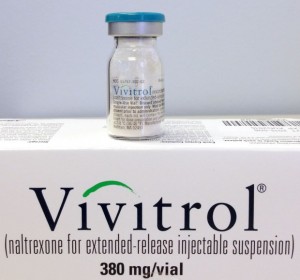Opioid relapse rates fall after jail release, according to pilot study
It has been called a pioneering strategy for treating opioid addiction, and has already been adopted in a small yet growing number of jails and prisons in the United States. Now, a clinical trial published in the journal Addiction by researchers at NYU Langone Medical Center finds that the extended-release medication naltrexone (XR-NTX) is associated with a significant decline in relapse rates for a group of mostly heroin-dependent men after their release from New York City jails.
The NYU Langone researchers say that their study is the only randomized controlled trial to look at the effectiveness of extended-release naltrexone, an injectable drug sold under the brand name Vivitrol, in a municipal jail setting. Typically, jails incarcerate opioid users for brief periods of time, during which time an individual detoxes but often does not gain access to evidence-based relapse prevention treatment. XR-NTX is an understudied opioid antagonist that prevents relapse by blocking the effects of opioids in the brain, like euphoria, pain relief, sedation and physical dependence, as well as cravings.
“There has been a lot of interest in Vivitrol as post-incarceration relapse prevention, but not much actual data,” said lead investigator Joshua D. Lee, MD, MSc, associate professor of Population Health and Medicine at NYU Langone. “This randomized trial was designed to examine the impact of the medication on relapse to heroin in the first few weeks after release from jail, and it showed substantial benefits.”
The study, a pilot, proof-of-concept trial, included 33 participants who had been incarcerated in New York City Department of Correction jail facilities and were not interested in methadone or buprenorphine maintenance programs. Of that group, 16 received extended-release naltrexone before their release date and were offered a second injection four weeks later, while 17 did not receive the drug. Both groups received motivational counseling and referrals to community treatment. There was no placebo injection.
After one month following release from jail, 88 percent (15) of participants in the control group relapsed, while only 38 percent (6) relapsed in the treatment group. Participants in the treatment group who received a naltrexone injection before their release and one month later were also less likely to be re-incarcerated during the study period, compared to the remaining participants.
 The investigators were not able to enroll women in the trial because most female inmates approached for participation had enrolled in pre-release methadone maintenance programs.
The investigators were not able to enroll women in the trial because most female inmates approached for participation had enrolled in pre-release methadone maintenance programs.
The results are in line with the previous trial of XR-NTX’s efficacy and with prior randomized and cohort evaluations of methadone and buprenorphine therapies for soon-to-be-released jail and prison inmates.
“Opioid disorders now have two FDA-approved and effective maintenance medications and one for relapse prevention,” the authors write. “Prisons and jails are ideal environments to offer these treatments and to promote their continued use in the community.”
###
Link to study: http://onlinelibrary.wiley.com/doi/10.1111/add.12894/abstract
Additional authors include Ryan McDonald, MA; Ellie Grossman, MD; Jennifer McNeely, MD, MS; Eugene Laska, PhD; John Rotrosen, MD; and Marc N. Gourevitch, MD, MPH.
ClinicalTrials.gov identifier: NCT01180647
This research was supported by an NYU School of Medicine Center of Excellence Seed Grant, the NYU Department of Medicine Michael Saperstein Medical Scholar Research Award and an Investigator-Sponsored Study award to Dr. Lee from Alkermes, Inc. (ALKISS-LEE-017). Alkermes provided the study drug in-kind.
###
Lorinda Klein
.(JavaScript must be enabled to view this email address)
212-404-3533